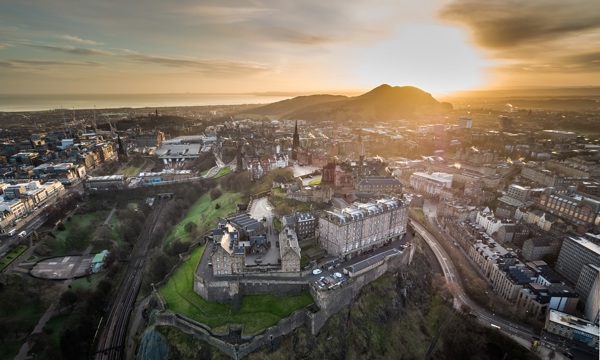Historic Environment Scotland (HES) has published updated results of a follow up survey scoping the impacts of COVID-19 on the country’s historic environment sector.
The survey, which ran from mid-August to early September, repeated some key questions from an initial report published in June this year - to reveal any changes over that time across the sector and to illustrate comparisons. The additional results will inform ongoing recovery work with sector partners.
HES Director of Development and Partnership, Alison Turnbull said: "Alongside the rest of the country, this has been an incredibly difficult time for Scotland’s historic environment sector, and I would like to thank all those who took time to engage with this latest survey.
"The findings allow us to chart not only impacts of the pandemic on sector partners, but to gauge comparisons now with the state of play when we first surveyed the sector in April at the start of lockdown."
"This in turn, helps provide a picture of impacts and where there are further challenges and opportunities. The findings can also be used by partners to inform their own strategies going forward."
Key findings from the latest survey show the most common effects on the heritage sector were again loss of revenue, with 70 per cent of respondents citing this; while 65 per cent of those surveyed noted postponement/cancellation of planned income-generation or marketing events having the biggest impact on their operation. 63 per cent of respondents also listed loss or postponement of work due to the ongoing pandemic.
There were some notable differences across the two surveys with some respondents reporting staff redundancies doubling from 4 per cent in the first survey to 8 per cent when taking part in the follow up survey. Also, the proportion reporting increased overheads doubled from 7 per cent to 14 per cent between the respective reports.
There was also a rise in the proportion of sector partners reporting business critical staff absence (11 per cent to 18 per cent), with increased levels of respondents reporting the need to halt plans to pursue major capital projects (11 per cent to 19 per cent) and many facing additional costs such as investment in IT/ home working – up from 22 per cent to 33 per cent across the survey periods.
More positively, the latest survey show the proportion of the sector experiencing some pandemic effects had dropped, with the adverse effect on operators to deliver "positive impacts" down to 55 per cent from the previous rate of 65 per cent; while those reporting loss or postponement of work fell to 63 per cent from 78 per cent. HES noted, however, this could be explained by the timing of the follow up survey coinciding with the post lockdown resumption of some parts of the sector.
The new findings also show 33 per cent had successfully utilised the UK Government Job Retention Scheme, while almost a quarter (20 per cent) have benefitted from Scottish Government grant funding of £10,000 for operators in receipt of small business rate relief or rural rate relief.
Meanwhile, the proportion not pursuing any support schemes or measures was almost consistent across both surveys with 27 per cent in the initial survey and 29 per cent in the follow up. Survey findings will also be used to consider how the sector can support the national recovery and wider agendas such as wellbeing and the transition to a sustainable low-carbon economy.
HES, in conjunction with the Scottish Government has also launched a new £2.6 million Historic Environment Recovery Fund to support the sector from the impacts of COVID-19. This is now open for applications and is split into two streams: Reopening Historic Buildings and Sites and Sector Resilience and Recovery. Through it, organisations can apply for grants from £10,000 - £100,000 with the fund open to any organisation delivering significant outcomes for Scotland’s historic environment.
Alison continued: “The historic environment makes a vital contribution to communities right across Scotland, supporting jobs and local economies and promoting health and wellbeing – and as such we have a collective role to play in our national recovery.
“It’s crucial we work together towards ongoing recovery right across our sector, with these latest findings a useful base to identify key areas for collaboration and a way ahead for us to collectively develop a future vision for our historic environment and the various benefits it brings.”
Both surveys were completed by community groups, faith-based organisations, charities, social enterprises, sole traders, and private sector organisations.
Download the findings in fullAbout Historic Environment Scotland (HES)
- We are the lead public body charged with caring for, protecting and promoting the historic environment. We will lead on delivering Scotland’s first strategy for the historic environment, Our Place in Time.
- Historic Scotland, Scran, Canmore, The National Collection of Aerial Photography (NCAP), The Engine Shed, Stirling Castle and Edinburgh Castle are sub-brands of HES.
- View our press pack and keep up to date by registering for media release email alerts. If you wish to unsubscribe, please contact us.
Follow Historic Environment Scotland
Twitter: @HistEnvScot | @welovehistory
Facebook: @HistoricEnvScotland | @VisitHistoricScotland
Instagram: @HistEnvScot | @historicscotland
For media enquiries, please contact:
Barry McPherson
Historic Environment Scotland Media Office
Mobile: 07880 124 601
communications@hes.scot

